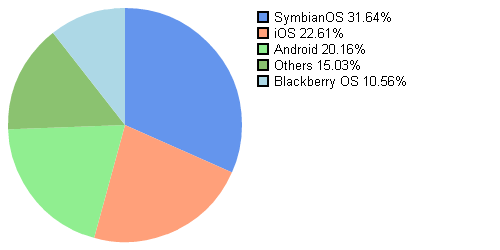

software written prior to Apple’s transition to Intel processors in 2006). Other possible reasons may include users’ concerns about possible software incompatibilities one well-known example is that Snow Leopard was the last version of OS X that allowed users to run PowerPC-native applications (i.e. One possible reason is that not all Macs running outdated operating systems are capable of being upgraded to Yosemite due to minimum hardware requirements (see What to Do if Your Mac Can’t Run OS X Yosemite). So why are there still almost 10% of Mac users on Snow Leopard, which hasn’t been getting security updates from Apple for more than a year? And why is Lion, which is no longer getting security updates as of the release of Yosemite in October, staying nearly stagnant at close to 8% of the Mac installed base?
Smart phone os market share stats upgrade#
The fact that Mavericks and now Yosemite were offered as free upgrades for all Macs running Mountain Lion-and select Macs running Lion or Snow Leopard-certainly seems to have been a driving force in users’ willingness to upgrade their Macs’ operating systems.īut the latest statistics, just like the stats from two months ago, reveal that approximately one in every five Macs is running a version of OS X for which Apple is no longer releasing security patches. The new market share numbers indicate that a large percentage of Mac users is upgrading to the latest version of OS X.

Mountain Lion (10.8), Lion (10.7), and Snow Leopard (10.6) only had slight decreases in market share of less than 3% each. Specifically, more than 93% of those who upgraded to Yosemite within the past two months seem to have upgraded from Mavericks (or started using a new Mac that shipped with Yosemite). Nearly all of the gain in Yosemite’s market share came from former users of Mavericks (OS X version 10.9, which was released a year prior to Yosemite). So what led to the 25% jump? And how does this relate to Mac security? This is a significant increase over two months ago, when Yosemite had been out for less than a month, and Net Applications’ data indicated that Yosemite had nearly reached 20% of the market already by that time.


 0 kommentar(er)
0 kommentar(er)
